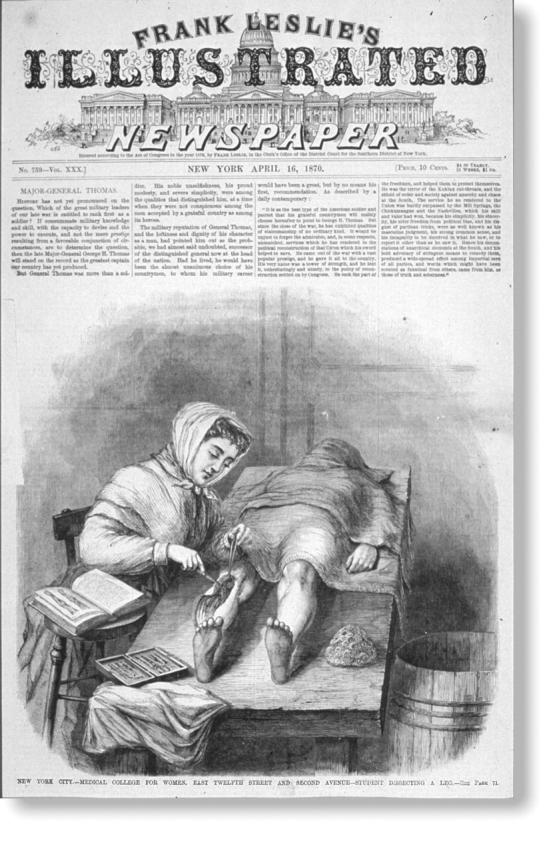Figure .

Source. Prints and Photographs Collection, History of Medicine Division, National Library of Medicine.
THIS 1870 COVER, FROMFrank Leslie's Illustrated Newspaper, a well-known New York City reform newspaper of the time, celebrates the competence and dedication of the first generations of women medical students. At a time of early feminist agitation, when Susan B. Anthony and Elizabeth Cady Stanton were living in a brownstone on West 45th St, creating the Women's National Suffrage Association and launching the feminist journal Revolution, Frank Leslie's cover was clearly in tune with the spirit of the times. As the masthead of Revolution proclaimed, “Men Their Rights and Nothing More—Women Their Rights and Nothing Less.”
The census of 1870 counted 525 trained women doctors in America—more than in the rest of the world combined. Of these, the large majority were practitioners of homeopathic, eclectic, or botanical medicine. Only 137 women were enrolled in regular medical schools, and most of these were in separate women's medical colleges. The most ambitious of these was the Medical College for Women in New York City, founded by Elizabeth Blackwell, the first woman in America to graduate with an MD degree. Her own school, Geneva Medical College, had declared the experiment of medical education for women “a failure” soon after her graduation in 1849 and thereafter denied entrance to women students.
Frustrated by the difficulty of obtaining medical and hospital training for women, Elizabeth and her physician sister Emily, with the assistance of Dr Marie Zakrzewska, started an infirmary in New York in 1857. In 1868, the sisters Blackwell opened a medical school of high standards in conjunction with the infirmary, thus offering women a complete medical education on a par with the best of the regular medical colleges of the day. The rigorous, graded curriculum included the first course in hygiene (public health and preventive medicine) offered anywhere in the country.
Note. Most of the Prints and Photographs Collection of the History of Medicine Division of the National Library of Medicine may be viewed through the online database “Images From the History of Medicine” at http://wwwihm.nlm.nih.gov/. The Web site also provides information on ordering reproductions of images. If you have a print, photograph, or other visual item that might be appropriate for this collection, please contact the History of Medicine Division.


